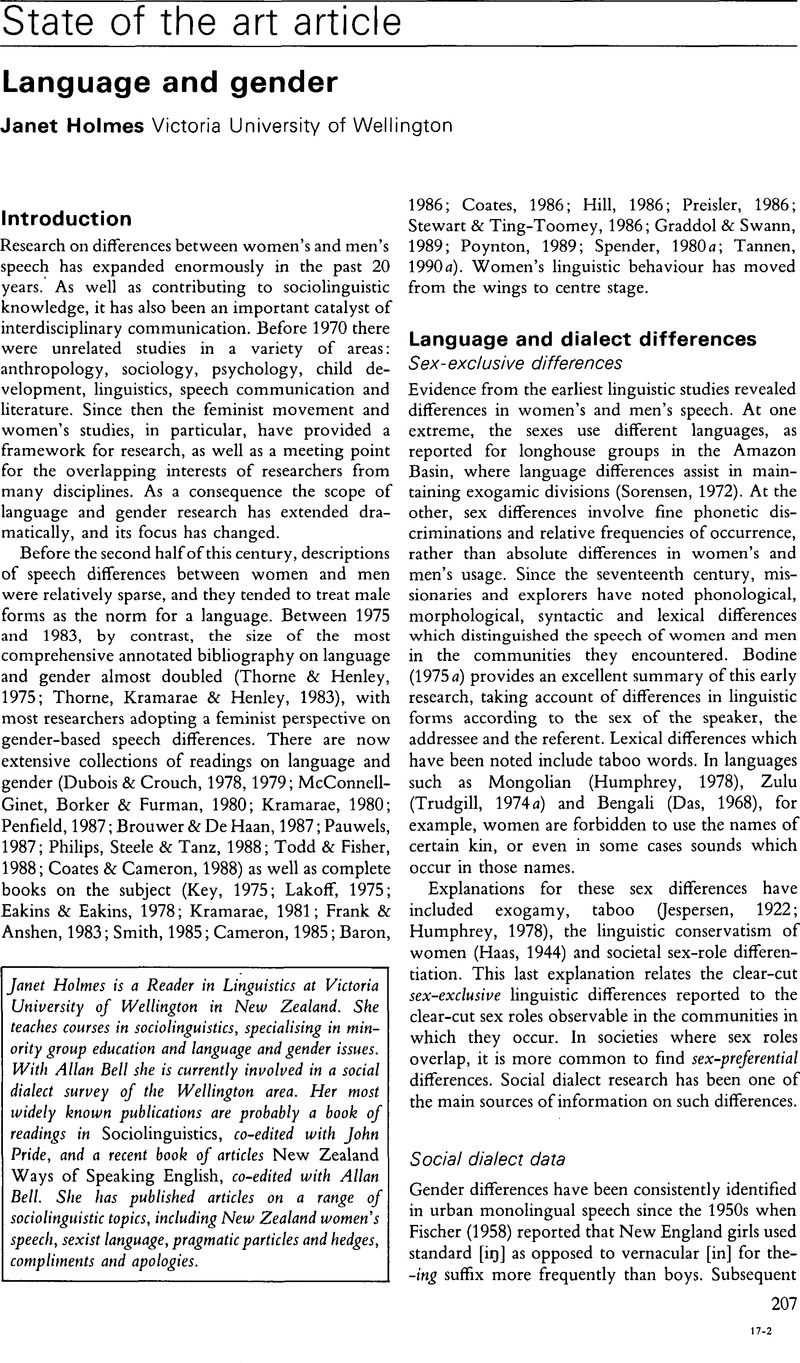Crossref Citations
This article has been cited by the following publications. This list is generated based on data provided by Crossref.
Johnson, Donna M.
1992.
Interpersonal involvement in discourse: Gender variation in L2 writers' complimenting strategies.
Journal of Second Language Writing,
Vol. 1,
Issue. 3,
p.
195.
Freed, Alice F.
1995.
Language and Gender.
Annual Review of Applied Linguistics,
Vol. 15,
Issue. ,
p.
3.
Graham, Suzanne
and
Rees, Felicity
1995.
Gender differences in language learning: the question of control.
The Language Learning Journal,
Vol. 11,
Issue. 1,
p.
18.
Sunderland, Jane
2000.
Issues of language and gender in second and foreign language education.
Language Teaching,
Vol. 33,
Issue. 4,
p.
203.
Ladegaard, Hans J.
and
Bleses, Dorthe
2003.
Gender differences in young children's speech: the acquisition of sociolinguistic competence.
International Journal of Applied Linguistics,
Vol. 13,
Issue. 2,
p.
222.
Xudong, Deng
2008.
Handbook of Pragmatics.
p.
1.
Vefali, Gülşen Musayeva
and
Erdentuğ, Fulya
2010.
The coordinate structures in a corpus of New Age talks: “man and woman”/“woman and man”.
Text & Talk - An Interdisciplinary Journal of Language, Discourse & Communication Studies,
Vol. 30,
Issue. 4,
p.
465.
Baron, Naomi S.
and
Campbell, Elise M.
2012.
Gender and mobile phones in cross-national context.
Language Sciences,
Vol. 34,
Issue. 1,
p.
13.
Liao, Xinyu
and
Zhang, Yanhui
2023.
Stylistic and linguistic variations in compliments: an empirical analysis of children’s gender schema development with machine learning algorithms.
Humanities and Social Sciences Communications,
Vol. 10,
Issue. 1,
Dong, Yijie
and
Li, Danyang
2023.
Gender representation in textbooks: a bibliometric study.
Scientometrics,
Vol. 128,
Issue. 11,
p.
5969.
Bissoonauth, Anu
and
Rando, Gaetano
2024.
Reported language choice and usage of teenage Mauritians.
Journal of Pidgin and Creole Languages,



